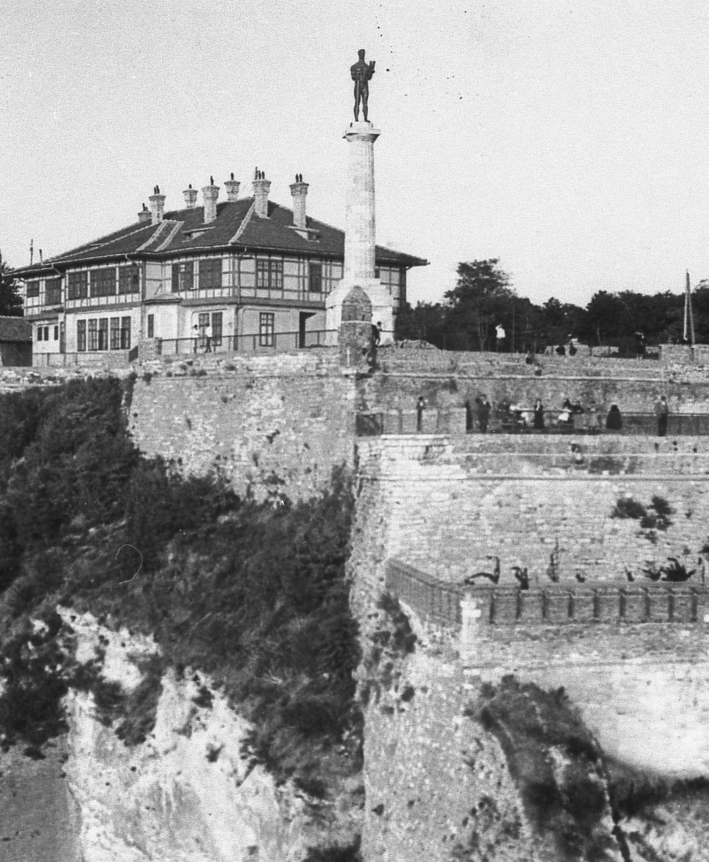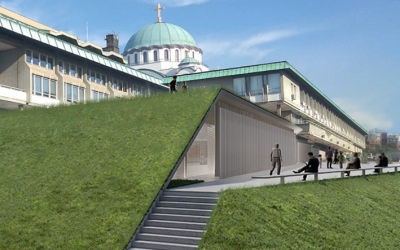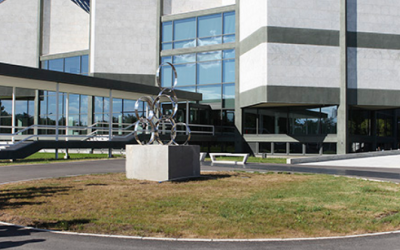BINA WALK
Sunday, 26.6.2022. 18.00-20.00
Guided by: Aleksandar Božović
→ At the entrance Art Pavilion Cvijeta Zuzorić
The history of the Belgrade Fortress, the oldest urban space in Belgrade, can be traced back to the founding of the Roman Singidunum. The Slavic name of the city – fortress – Belgrade – was first mentioned in the year 878 in a letter from Pope John III to the Bulgarian prince Boris. Today’s appearance of the Belgrade Fortress as a fortification unit was formed over two millennia. The construction, destruction, and renovation of the ramparts of the Belgrade Fortress depict the ups and downs of Belgrade, as well as the importance of its role in the past. Located at the crossroads of European roads to the East, it has been a defensive stronghold and a starting point for conquests for centuries. The origin of the Belgrade Fortress and its oldest core, the Upper Town, is linked to the presence of the Romans in this region at the end of the Old Era and the beginning of the New Era. During the long period of its formation, the Belgrade fortifications evolved from the ancient fortified camp – castrum, through the fortification of the medieval city, to the modern bastion of the artillery fortress. After the fall of the Roman Empire, in the period from the 5th to the 15th century, the Fortress went through a turbulent history under the rule of Byzantium, Bulgaria, Hungary, and Serbia. During the reign of despot Stefan Lazarević (1404-1427), it took a form of a developed medieval fortress, with the Inner and Lower Towns, the western and eastern suburbs. According to the despot’s biographer Constantine the Philosopher, the Inner Town was the most strongly fortified part of the fortress, which housed the court of despot Stefan, the treasury, the chapel, and the library. Under Ottoman rule from 1521, the Fortress began to develop outside the walls, and with the arrival of the Austrians in 1717, its modernization began, which introduced significant changes in its overall appearance. Gunpowder warehouses, barracks, and other military facilities were built in the Lower Town, and all facilities on the Upper Town Plateau from the Ottoman period were demolished apart from one mosque. When the Serbs finally received the keys to the Belgrade Fortress in 1867, it remained subordinate to the military needs of the Serbian, and later Yugoslav army. The Fortress played its last major military role during the First World War. Today, the complex of the Belgrade Fortress, in the spatial and functional sense, forms an inseparable whole with the Kalemegdan Park, whose landscaping began in the 1870s. Public monuments in this park are of special value, which have been continuously erected in this area from the beginning of the 20th century until today. The Belgrade Fortress was classified as a cultural monument of exceptional importance in 1979.
A special curiosity in the formation of the Belgrade Fortress space is Nikola Dobrović’s idea from 1946 that has not been implemented, published in the study Reconstruction and Construction of Belgrade: Contours of the Future City. Back then, Dobrović envisaged construction of the Political and Sports Stadium in the Lower Town of the Belgrade Fortress, while he designed a “vertical upgrade” on the Upper Town Plateau of the Belgrade Fortress, or construction of facilities of national importance, including the National Assembly, and Pantheon Museum of the National Liberation War.
Places - Available: 0 Reserved: 49 Approved: 29
All the places are booked!
You can fill in form only for waiting list.








